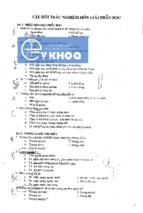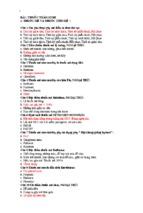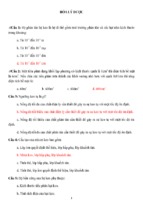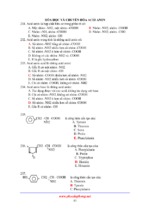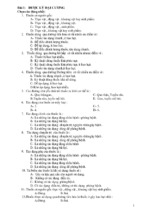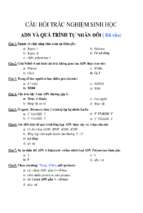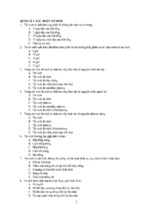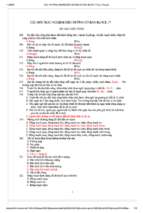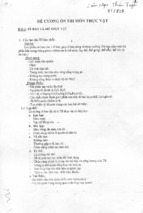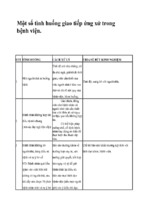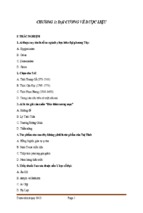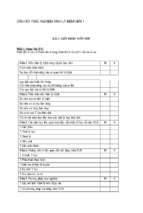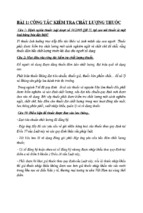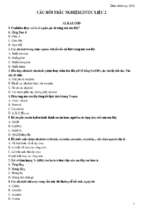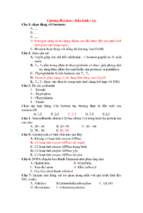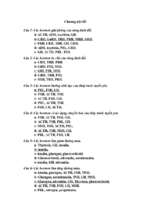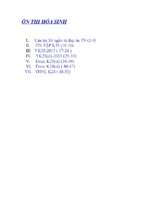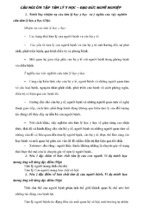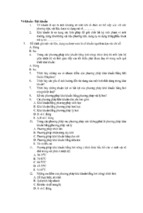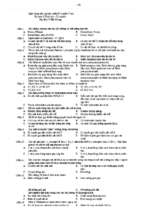Herbalism, Phytochemistry
and
Ethnopharmacology
Herbalism, Phytochemistry
and
Ethnopharmacology
AMRITPAL SINGH SAROYA
Herbal Consultant
Punjab
India
6000 Broken Sound Parkway, NW
Suite 300, Boca Raton, FL 33487
Taylor & Francis Group 270 Madison Avenue
New York, NY 10016
an informa business
2 Park Square, Milton Park
www.crcpress.com Abingdon, Oxon OX 14 4RN, UK
CRC Press
Science Publishers
Enfield, New Hampshire
Published by Science Publishers, P.O. Box 699, Enfield, NH 03748, USA
An imprint of Edenbridge Ltd., British Channel Islands
E-mail:
[email protected]
Website: www.scipub.net
Marketed and distributed by:
6000 Broken Sound Parkway, NW
Suite 300, Boca Raton, FL 33487
Taylor & Francis Group 270 Madison Avenue
New York, NY 10016
an informa business
2 Park Square, Milton Park
www.crcpress.com Abingdon, Oxon OX 14 4RN, UK
CRC Press
Copyright reserved © 2011
ISBN 978-1-57808-697-9
CIP data will be provided on request.
The views expressed in this book are those of the author(s) and the publisher does not assume
responsibility for the authenticity of the findings/conclusions drawn by the author(s). Also
no responsibility is assumed by the publishers for any damage to the property or persons as
a result of operation or use of this publication and/or the information contained herein.
All rights reserved. No part of this publication may be reproduced, stored in
a retrieval system, or transmitted in any form or by any means, electronic,
mechanical, photocopying or otherwise, without the prior permission of the
publisher, in writing. The exception to this is when a reasonable part of the text is
quoted for purpose of book review, abstracting etc.
This book is sold subject to the condition that it shall not, by way of trade or otherwise
be lent, re-sold, hired out, or otherwise circulated without the publisher’s prior
consent in any form of binding or cover other than that in which it is published
and without a similar condition including this condition being imposed on the
subsequent purchaser.
Printed in the United States of America
Foreword
It is indeed an honour to be invited to write the Foreword for book titled
‘Herbalism, Phytochemistry and Ethnopharmacology’ with its twin lofty
motto both to educate and to provide much needed scientific validation to
herbal medicine.
The author has achieved in this book the multi-faceted objectives of
emerging herbal science which is a blend of ancient knowledge coupled with
scientific proofs. When I received an invitation from the author to write the
Foreword to the book I was somewhat puzzled by the invitation. After all,
during the past one decade, my work has focused upon the pharmacological
aspects of Ayurvedic and herbal medicine. I have coauthored a number of
research and review papers along with the author detailing herbal medicine
and ethnopharmacology. And prior to that, my original scientific training
and qualifications were as pharmacologist, rather than Herbal Medicine.
The scope of this book is truly impressive, reviewing the phytochemical
and pharmacological aspects of herbal drugs. The book is thoroughly
referenced and illustrates the scientific approach to herbalism. The book
is not limited to one class of Complementary and Alternative Medicine
but also highlights medicinal applications of lesser known systems like
Amchi. The book clearly warrants application of algae, fungi and mosses
in drug discovery. This book was need of the hour to provide clarifications
regarding issues related to herbalism.
Herbalism and traditional medicine are backbone of the modern
pharmaceutical industry. In China and Western countries, herbal medicine
has come into the limelight because of advancement in research and
development. Taxol (Taxus brevifolia), Silymarin (Silybum marianum),
Artemisinin (Artemisia annua) are some reputed drugs in synthetic system
of medicine. All the three drugs owe their origin to plants. We need to
explore other systems of Complementary and Alternative Medicine such
as Ayurveda, Siddha, Unani, Homeopathy and Amchi for more potent and
life saving drugs. I believe that this book should be of great help to people
concerned about the value of herbalism in future healthcare.
Dr. Samir Malhotra
Associate Professor, Dept of Pharmacology
Postgraduate Institute of Medical Sciences and Research
Chandigarh
Preface
This book has been written with the primary objective of providing scientific
footage to medical herbalism. With advancement of our knowledge of the
subject, a large number of texts have appeared which are useful in their
own way but do not fully meet the interdisciplinary nature of herbalism.
Herbalism coupled with phytochemistry and ethnopharmacology is a
powerful tool for drug discovery.
The present treatise has been presented in a simple and lucid style
so that a student who has even a limited knowledge of herbalism can
understand the phytochemical and pharmacological aspects of herbalism.
A simple, clear, well illustrated and a concise account of phytochemicals
and experimental pharmacology has been presented. An introductory
chapter in the beginning of the text is meant to acquaint the students with
a general outline of various issues related to herbalism. Another objective
has been to present the entire subject matter in light of new advancements
in herbal drug discovery.
The book is primarily meant for students of phytochemistry,
ethnopharmacology, phytotherapy and medicinal plants. For the benefit
of the readers, concise information in form of tables has been included.
Each chapter contains a complete bibliography which may particularly
benefit postgraduate and research-oriented students and teachers.
It is certainly not possible to consider all aspects of herbalism in a
single book, especially when there are genuine limitations such as lack of
standardization and awareness. No originality is claimed in the preparation
of this book. It is simply a compilation of work done in a manner so as to
meet the needs of the students of herbalism and related subjects. A large of
standard books on the subject and research journals have been consulted.
I am also greatly indebted to all eminent herbal scientists of the world for
sending me copies of original papers.
During the three-year period that this book passed through the
different stages of preparation and production, I perforce ignored my
family. For all kinds of personal help rendered to me by my parents and
wife, I have no words to express my feelings. Special thanks is due to my
pretty daughter Seerat Kaur for tolerating my whims and moods while
working for the project. My heartiest thanks to Dr. Bhupinder Singh Bhoop,
viii Herbalism, Phytochemistry and Ethnopharmacology
Professor (Pharmaceutics & Pharmacokinetics), University Institute of
Pharmaceutical Sciences, Punjab University, Chandigarh and Dr. Samir
Malhotra, Associate Professor (Pharmacology), Postgraduate Institute of
Medical Sciences and Research, Chandigarh for providing the stimulus to
achieve this ambitious project.
Finally, I wish to express my thanks to my publishers for providing
me the facilities in the publication of the book. Constructive suggestions
from readers, for the improvement of possible future editions of the book,
shall be gratefully acknowledged.
September 2010
Amritpal Singh
Contents
Foreword
Preface
1. Herbal Drug Industry
2. Reverse Pharmacology
3. Ethnopharmacology
4. Medicinal Phytochemistry
5. Phytochemicals
6. Phytochemicals Research—Emerging Concepts
7. Therapeutic Utility of Ayurveda
8. Amchi System of Medicine
9. Ethnopharmacology of Algae
10. Ethnopharmacology of Lichens
11. Ethnopharmacology of Bryophytes
12. Ethnopharmacology of Anthelmintic Ferns
13. Ethnopharmacology of Medicinal Orchids
14. Salacia sp. Potential Hypoglycemic Plants
15. Ethnopharmacology of Taraxacum officinale Weber
16. Ethnopharmacology of Acanthus ilicifolius Linn.
17. Ethnopharmacology of Alstonia macrophylla ex A. DC
18. Ethnopharmacology of Alstonia venenata R. Br
19. Ethnopharmacology of Holoptelea integrifolia Planch.
20. Ethnopharmacology of Terminalia belerica (Gaertn.) Roxb
21. Ethnopharmacology of Nardostachys jatamansi DC.
22. Ethnopharmacology of Eclipta alba Linn.
23. Ethnopharmacology of Cassia siamea Lam.
24. Ethnopharmacology of Tylophora asthmatica Wight & Arn.
25. Colchicine Containing Medicinal Herbs
v
vii
1
18
26
33
36
215
251
263
268
277
286
294
300
312
323
336
341
351
353
357
362
368
376
384
390
x Herbalism, Phytochemistry and Ethnopharmacology
26. Lakshmana-Ayurvedic Drug of Controversial Origin
27. Antidiabetic Potential of Pterocarpus marsupium
Index
Color Plate Section
395
399
405
427
Chapter 1
Herbal Drug Industry
1.1 Introduction
A considerable number of definitions have been proposed for the term
‘medicinal plant’. According to the World Health Organization, “a
medicinal plant is any plant which, in one or more of its organs, contains
substances that can be used for therapeutic purposes, or which are
precursors for chemopharmaceutical semi synthesis”.
This definition distinguishes between the already known medicinal
plants whose therapeutic properties or characters are precursors of certain
molecules which have been established scientifically, with that of other
plants used in traditional medicine which are regarded as medicinal, but
have not yet been subjected to a thorough scientific study.
Medicinal plants are a significant source of synthetic and herbal drugs.
Patterns of herbal utilization are depicted in Fig. 1.1 Medicinal plants have
been used for the treatment of diseases since antiquity. According to Alves
and Rosa (2007), 20,000 plant species are used for medicinal purposes.
India and China have been on the forefront when one refers to the history
of herbal drugs. The traditional systems of medicines viz. Ayurveda,
Siddha, Unani, Western Herbal Medicine, Traditional Chinese Medicine
and Homeopathy have roots in medicinal herbs. Herbal medicines have
been produced by a number of renowned researchers and due to its
accessibility to traditions it is still practiced even by lay practitioners.
Ayurveda, the ancient healing system flourished in India in the Vedic
era. The classical texts of Ayurveda, Charaka Samhita and Sushruta
Samhita were written around 1000 B.C. The Ayurvedic Materia Medica
includes 600 medicinal plants along with therapeutics. Herbs like turmeric,
fenugreek, ginger, garlic and holy basil are integral parts of Ayurvedic
formulations. The formulations incorporate a single herb or more than
two herbs (polyherbal formulations).
The history of traditional Chinese medicine is renowned and the
herbal system, is very well preserved. It originated about 3000 years ago
2
Herbalism, Phytochemistry and Ethnopharmacology
Food supplements
Herbal beverages
Health foods
Foods
Herbs for primary health
Insect repllents
Animal drugs & food
HERBS
Drugs
Traditional drugs
Herbal drugs
Modern drugs
Herbicides
Herbal cosmetics
Fig. 1.1 Patterns of herbal utilization.
Source: Riewpaiboon (2003).
and is a popular science in western countries. Some of the medicinal herbs
mentioned in Chinese medicine are common to Ayurveda. Traditional
Chinese medicine favors the use of medicinal herbs in their natural form
rather than by extraction. Herbal drugs have a different history in Europe
and America and have produced healers like Culpeper. The use of tinctures
in homeopathy is based on medicinal herbs.
Before the availability of synthetic drugs, man was completely
dependent on medicinal herbs for prevention and treatment of diseases.
The use of the medicinal herbs for curing diseases has been documented
in the history of all civilizations. The drugs were used in crude forms like
expressed juice, powder, decoction or infusion. Although the formulations
mentioned in ancient texts are difficult to understand in terms of scientific
parameters, some of them are reputed for their curative values. The
Napralert database at the University of Illinois establishes ethno medicinal
uses for about 9200 of the 33,000 species of monocotyledons, dicotyledons,
gymnosperms, lichens, pteridophytes, and bryophytes.
Ancient healers, who developed formulations based on medicinal
herbs, were probably not aware of the chemical composition of the herbs.
However the advances they made despite the non-availability of scientific
procedures is astonishing. The work on Terminalia chebula (chebulic
myrobalan) mentioned in Charaka Samhita is quite authentic and modern
studies have revealed that the purgative activity mentioned in Ayurveda is
justified by the isolation of chebulic acid, the active constituent of chebulic
myrobalan.
Initially, the term Materia Medica was coined for the study of natural
products. Materia Medica is defined as the knowledge of natural history,
physical characteristics, and chemical properties of drugs. It includes
Herbal Drug Industry 3
the study of herbs, minerals and drugs from the animal kingdom. The
Ayurvedic equivalent for Materia Medica is Dravyaguna, which is the
study of medicinal herbs in Ayurvedic terms. Now days the term ‘Materia
Medica’ is known as pharmacognosy.
1.2 Phytomedicines and Herbal Extracts
A medicinal herb is considered to be a chemical factory as it contains a
multitude of chemical compounds like alkaloids, glycosides, saponins,
resins, oleoresins, sesquiterpene lactones and oils (essential and fixed).
Some rare compounds like furanocoumarins, hydroxycoumarins,
napthoquinones, acylphloroglucinols and sterones are also distributed
among the plant kingdom. The active constituents are usually secondary
metabolites, derived from biosynthetic pathways present within the plant
tissue. In 1985 it wa s recorded that 74% of the 119 plant derived drugs were
discovered as a result of chemical studies to isolate the active substances
responsible for their traditional use.
Plants are used in different forms varying from powders to extracts.
Powder represents the drug in the ground form and these types of
preparations are considered to be crude. The Pharmacopoeia mentions
standardized vegetable powders for therapeutic application. Herbal
systems of medicine have become increasingly popular in recent years.
In light of the growing demand of herbal drugs, quality control and
assurance is primarily important. The standardized herbal extracts are
considered to be more scientific than crude drugs. The commonly employed
technique for removal of the active substance from the crude drug is called
extraction. Selection of the solvent is very critical in preparing the extracts,
because the active constituent of the plants have an affinity for solvents.
1. Water and petroleum ether are used for extraction of fixed and essential
oils and sterones.
2. Chloroform and ether are used for extraction of alkaloids.
3. Water and alcohol are used for extraction of glycosides.
4. Tannins and phenols are extracted with alcohol and ethyl acetate.
Extracts are prepared by separating the soluble matter from vegetable
tissues by application of a suitable solvent like alcohol, water or ether. The
resultant liquid is concentrated by evaporation to obtain a liquid extract
or concentrated almost to dryness to obtain the solid extract. Depending
on the solvent used, the extracts are classified as alcoholic, etheral or
aqueous.
The standardized herbal extract is a preparation, which contains a
certain fixed proportion of the active constituent (Table 1.1). Although
the most obvious aspect of standardization is the guaranteed content of
4
Herbalism, Phytochemistry and Ethnopharmacology
one or more active constituents or marker compounds, standardization
involves much more than guaranteed levels of constituents. For example,
a standardized extract of Papaver somniferum contains not less than 9.5%
of morphine. Standardization has a great impact on the quality of herbal
products. Standardization helps in adjusting the herbal drug formulation
to a defined content of a constituent or constituents with therapeutic
activity.
Table 1.1 Constituents with known activity.
Extract
Aesculus hippocastanum
Constituent
Atropa belladona
L-Hyoscyamine
Escin (s)
Cassia angustifolia/acutifolia
Sennosides
Piper methysticum
Kava-pyrones (mixture of six)
Silybum marianum
Source: Keller (2001).
Silymarin (mixture of six)
The biological source of a drug has great impact on finished products in
herbal drug preparation. Proper identification of the drug is significant for
phytochemical screening, which further exerts importance on therapeutic
activity of the medicinal herb. Thus presence of the identification
standard is necessary in finished products of an herbal drug preparation.
A constituent of a medicinal herb, which is used for quality control and
assurance of the herbal product, is known as marker compound (Table 1.2).
A marker compound may or may not have therapeutic activity.
Table 1.2 Constituents with known activity.
Extract
Ginkgo biloba
Constituent
Ginkgolides and/or Flavonoid(s) and/or
Bilobalide
Hypericum perforatum
Flavonoids, e.g. Quercetin and/or
hypericin and/or Hyperforin
Matricaria chamomilla
Flavonoid (s), e.g. Apigenine and/or
Chamazulene and/or
Levomenol (-(α) Bisabolol)
Valeriana officinalis
Valerenic acid and/or Hydroxy-valerenic
acid and/or Acetoxy-valerenic acid
Source: Keller (2001).
Advantages of standardized extracts
Standardized extracts retain the chemical complexity typical of the natural
plant, but offer the added advantage of guaranteed levels of certain key
constituents. An increasing number of botanical medicines have had their
Herbal Drug Industry 5
clinical efficacy confirmed in clinical trials. The vast majority of clinical
trials involving botanical medicines have used standardized extracts. The
reason is simple: standardized extracts offer consistent and reproducible
therapeutic effects and the highest degree of safety. Accordingly,
standardized extracts produce the best clinical results.
Why standardization?
As botanical extracts are made directly from crude plant material, they can
show very substantial variation in composition, quality, and therapeutic
effects. The variation and diversity of life is enormous, even within a
species. In other words, two medicinal plants of the same species may look
similar, yet be substantially different in the levels of active constituents that
they contain. Botanical medicines made from plants that differ markedly
in their chemical constituents cannot produce the same therapeutic effects.
Since the practitioner or consumer will be unable to assess the difference,
they cannot compensate for it.
The consequence will be inconsistent clinical results.
Standardized extracts are:
• High quality extracts containing consistent levels of specified
compounds
• Broad spectrum extracts containing recognized active constituents
as well as a variety of other plant constituents (some of which may
contribute to the overall therapeutic quality of the extract)
• Extracts subjected to rigorous quality controls during all phases of the
growing, harvesting and manufacturing processes.
Clinical advantages:
• High quality extracts with consistent activity
• Consistent activity allows for more accurate prescribing
• Consistent activity allows for consistent clinical results
• Extensive quality control ensures the quality and safety of standardized
extracts
Quality control ensures:
• That the correct botanical species is used
• That only high quality raw materials are used
• That no other plant material has been used
• That the plant material is not contaminated with pesticides, heavy
metals, or other noxious agents, that the final extract complies with
international limits for microbial content and that the final product is
of a consistent high standard preparation.
6
Herbalism, Phytochemistry and Ethnopharmacology
Commonly used herbal extracts are listed in the Table 1.3.
Table 1.3 List of standardized herbal extracts prepared from medicinal plants.
S. No
Medicinal Herb
Achellia millefolium
Standard
Percentage
1
Essential oil
0.04%
2
Adhatoda vasica
Vasicine
0.5%
3
Allium sativum
Allicin
0.6%
4
Andrographis paniculata
Andrographolide
10%
5
Arctostaphylos uva-ursi
Arbutin
20%
6
Asparagus racemosus
Saponin
30%
7
Azadirachita indica
Azadiractin
2%
8
Bacopa monneri
Bacoside
20%
9
Betula alba
Flavonoids
1.6%
10
Boswellia seratta
Boswellic Acid.
40% & 70%
11
Camelia sinensis
Epigallocatechin Gallate
0.2%
12
Capsicum frutescens
Capsaicinoids
0.62%
13
Centella asiatica
Asiaticoside
3%
14
Cholorella emersoni
Chlorophyll
1%
15
Cimicifuga racemosa
Triterpenoid glycosides
2.5%
16
Coleus forskohlii
Forskohlin
10%–20%
17
Commiphora mukal
Guggulsterones
5%
18
Cratageus oxycanthus
Vitexin
5%
95%
19
Curcuma longa
Curcumin
20
Cynara scolymus
Cynarin
1%
21
Echinacea angustifolia
Echinacosides
4%
22
Echinacea purpurea
Cichoric acid
4%
23
Embelia ribes
Embellin
8%
24
Ephedra sinica
Ephedrine
6%
25
Equisetum arvense
Silicon dioxide
7%
26
Eschscholtzia californica
Protopine
0.20–0.24%
27
Filipendula ulmaria
Salicylic acid
0.20%
28
Garcinia cambogia
Hydroxy Cirtic Acid
50%
29
Ginkgo biloba
Flavonoglycosides
24%
30
Glycyrrihiza glabra
Glycyrrhizin
20%
31
Gymnema sylvestre
Gymnemic Acid
75%
32
Tannins
8–12%
Harpagoside
2.5%
34
Hamamelis virginiana
Harpagophytum
procumbens
Huperzia serrata
Huperzine
5%
35
Hydrastis canadensis
Alkaloids
3%
36
Hypericum perforatum
Hypericin
0.3%
37
Malpighia glabra
Vitamin C
33
2.5–25%
Table 1.3 contd...
Herbal Drug Industry 7
Table 1.3 contd...
S. No
Medicinal Herb
Matricaria chamomilla
Standard
38
Apigenin
Percentage
1%
39
Matricaria recutita
Apigenin
0.6%
40
Melissa officinalis
Rosmarinic acid
4%
41
Momordica Charantia
Bitters
3%
42
Myrciaria dubis
Vitamin C
5–10%
43
Ocimum Sanactum
Ursolic Acid
8%
44
Olea europaea
Oleuropein
18%
45
Orthosiphon staminens
Sinensetin
0.20%
46
Passiflora Incarnata
Vitexin
4%
47
Paullinia cupana
Caffeine
5–22%
48
Perilla frutescens
Polyphenols
3%
49
Peumus boldus
Boldine
0.05%
50
Phylanthus niruri
Bitters
2%
51
Picrorrhiza kurroa
Kutkosides
10%
52
Piper methysticum
Kavalactones
30%
53
Pueraria lobata
Daidzein
15%
54
Pueraria tuberosa
Disogenin
7%
55
Rhamnus frangula
Frangulin
10–20%
18–22%
56
Rhamnus purshiana
Cascaroside A
57
Ruscus aculeatus
Saponins (Ruscogenins)
10%
58
Salix tetrasperma
Salicin
10%
59
Sambucus nigra
Flavonoids
3%
60
Saraca indica
Tannins
8%
61
Sereno repens
Fatty acids
20–25%
0.02%
63
Sida cordifolia
Phenylpropanolamine
64
Silybum marianum
Silymarin
70%
65
Spirulina maxima
Phycocyanin
2.5%
66
Terminalia arjuna
Tannins
8%
67
Terminalia belerica
Tannins
40%
68
Terminalia chebula
Tannins
60%
69
Tribulus terrestris
Saponin
20% & 40%
70
Trigonella foenum graecum
Saponin
10%
71
Uncaria tomentosa
Saponin
2%
72
Urtica dioica
ß-sitosterol
0.8%
73
Vaccinium myrtillus
Anthocyanosides
25%
74
Valeriana officinalis
Valerenic acid
0.8%
75
Vitex agnus castus
Aucubin
0.6%
76
Vitis vinifera
Proanthocyanidins
95%
77
Withania somnifera
Withanolides
1.5%
Gingerols
5%
Zingiber officinale
78
Source: Singh and Sandhu (2005).
8
Herbalism, Phytochemistry and Ethnopharmacology
1.3 Markets and Marketing Issues
Herbal medicine and natural pharmaceuticals are moving from the fringe
to mainstream, with a larger number of people seeking remedies and health
approaches free of the side-effects caused by synthesized chemicals (Fig.
1.2). This was considered one of the most vital and high growth industries
of the 90s and is set to expand even further into the next century.
The increasing acceptance of herbal medicines in Australia is well
supported by trends around the world. In Germany and France which
together represent 39% of the $14 billion global retail market, herbal
remedies known as phytotherapeutics are well established, and the cost
for therapeutic use is covered by health insurance systems, and the quality
criteria applied to regulation and manufacturing are comparable to those
for chemical drugs.
The crude botanical raw materials for this industry have been grown
for long and traded in many countries around the world. As the Australian
market for herbal medicine develops, opportunities are arising for raw
materials to be grown in Australia, both for local and export markets.
Access to export markets may be facilitated by the `clean green’ image
that Australian agriculture presents to the world.
Botanical raw materials are comprised of dried plant materials in
the form of roots, barks, herbs, flowers, fruits, seeds, and resins. These
materials are traded in a whole form or, more commonly, are cut and
sifted to a consistently even particle size. Market prices for raw botanical
World Market
Export
Import
Export
Import
Wholesale
Farm
Raw
materials
system
Industry
Direct
sale
Store
Pharmacy
Wild
Hospital
Production
Hospital
Community
Production
Fig. 1.2 Herbal drug market.
Source: Riewpaiboon (2003).
Clinic
Health
Consumers
Herbal Drug Industry 9
materials are usually determined by supply and demand, but generally
tend to be stable.
At least 25% of medical prescriptions in recent times contain one
active compound from plant species, Duke (1990) estimated that the
value of drugs containing compounds from plant species is about US$ 10
billion in the United States alone (see Table 1.1). Most traded European
materials are priced at source in the range of $2.00 to $6.00/kg. Prices for
certified organic produce can be anywhere between $10.00 and $30.00/kg.
This supply market is very limited, hence the high prices. Prices for
difficult-to-grow, wild-harvested, or certified organic materials, usually
North American botanicals, can range in price from $20.00 to $120.00/kg
(Table 1.4).
Table 1.4 World market for flavor and fragrances (US$ m in 1990).
Flavours
2300
Fragrances
2400
Essential oils & other natural extracts
1050
Synthetic aroma chemicals
Source: Pearce (1988).
1100
The principal primary market for these raw materials is to industries
that manufacture:
•
•
•
•
•
•
Essential oils (Table 1.5)
Liquid extracts and tinctures
Herbal teas
Concentrated soft extracts (for further industrial application)
Concentrated dry extracts (for further industrial application)
Plant-derived pure pharmaceutical drugs.
The pharmaceutical industry is both large and highly successful. Sales
of plant derived drugs reached $30 billion worldwide in 2002. At present
about 50% of the total plant-derived drug sales come from single entities,
while the remaining 50% come from herbal remedies. Although the
latter have greater volumes of consumption, the relatively low volumes
of single entities, which are mostly prescription products, are more than
compensated by their higher prices.
Single entity plant drugs, which mostly treat serious medical ills,
include atropine, digoxin, morphine, paclitaxel, pilocarpine, reserpine,
scopolamine, topotecan and vincristine, among many others. Several of the
compounds have outlived their usefulness in light of better alternatives,
and are exhibiting a decline in sales. On the other hand, as a consequence
of new drug developments, single entities overall are projected to increase
their market share of the combined total future dollar sales.
10
Herbalism, Phytochemistry and Ethnopharmacology
Table 1.5 Some major essential oils and their compounds.
Source
Compounds
Angelica
Alpha-Pinene, Limonene
Clove leaf
Eugenol, Caryophylene
Citronella
Geraniol, Citronellol
Eucalyptus
Cineol
Lavender
Linalylacetate
Lemon grass
Citral
Lemon
Limonene
Peppermint
Spearmint
Source: Haq (1993).
Menthol
Carvone
Sales of these plant-based drugs in the U.S. amounted to some US$4.5
billion in 1980 and an estimated US$15.5 billion in 1990. Other drugs are
derived from animals and microorganisms. Development of drugs from
plants is a long and arduous process which involves many disciplines. It
has been estimated that only 5 to 15% of the approximately 250,000 species
of higher plants have been systematically investigated for the presence of
bioactive compounds. In industrialized countries, substances in everyday
use derived from plants are -digitalin, ephedrine, morphine, quinine and
many more. While the ones used less often like reserpine, guggulipid and
artemisinin are equally well known.
All 119 plant-derived drugs used worldwide in 1991 came from fewer
than 90 of the 250,000 plant species that have been identified. “Each such
plant is a unique chemical factory”, according to Norman R. Farnsworth
of the University of Illinois at Chicago, “capable of synthesizing unlimited
numbers of highly complex and unusual chemical substances whose
structures could (otherwise) escape the imagination... forever”.
In other words, scientists may be able to synthesize these plant
compounds in the laboratory. Commercially, these plant derived medicines
are worth about US$14 billion a year in the United States and US$40 billion
worldwide.
In 1990s, the U.S. National Institute earmarked US$8 million to screen
50,000 natural substances for activity against 100 cancer cell lines and the
AIDS virus. China, Germany, India, and Japan, among others, are also
screening wild species for new drugs.
The European market for herbal supplements is estimated at over US$
2.7 billion and for herbal remedies, a further US$ 0.9 billion. Germany is
by far the largest market. The market is growing rapidly at over 4% per
annum for herbal remedies and considerably faster for herbal supplements.
The US herbal market is nearing saturation and is expected to peak at US$
6–8 billion in the next few years.
Herbal Drug Industry 11
Table 1.6 Synthetic vs. phytomedicines.
S.No.
1.
2.
3.
4.
5.
6.
7.
Parameter
Cost
Chemistry
Target
Affinity
Potency
Incidence of side
effects
Action
8.
9.
In vitro test
Patents
Synthetic
High
Usually simple
High
High
High
Higher, often unpredictable
Phytomedicine
Low
Usually complex
Usually complex
low
low
Lower, usually predictable
Drastic changes in
physiological events
Often adequate
Easy
Restore physiological
balance
Inadequate
Difficult
Source: Rajasekharan (2000).
Their dietary herbal supplement market is estimated at US$4
billion and has been growing at 6–8% per annum. The main producers
are manufacturers based in the developed countries, including the large
multinational pharmaceutical companies. There are also smaller companies
that specialize in herbal products and some have emerged to challenge the
multinationals for market leadership in this field.
The main products sold are based on plants such as Echinacea and
St. John’s Wort that were known for their medicinal properties in the
consuming countries. Recent research has helped propel the knowledge
of other plants from around the world and this has helped accelerate the
development of new supplements and medicines. The market share of
herbal products made in developing countries remains comparatively
low.
Chinese products, mainly in herbal supplements, have achieved
major successes. The EU and the US regulations have special provision
for herbal medicines that do not use mixtures of herbs. In this respect
their regulations are, comparatively, relaxed. But if the exported products
contain herbal mixtures and claim curative properties, the rules become
much stricter. For medicines, product trials need to be carried out that cost
several millions of dollars.
Scientific knowledge of the products produced in the developing
countries, and of their systems of traditional medicine, is limited and this
also restricts the market for their herbal products. As markets grow, the
search for a wider variety of ingredients is increasing. Phytomedicines
have already started to link traditional medicines with modern (allopathic)
medicine, with research and development primarily funded by large
pharmaceutical manufacturers.
Demand for medicinal plants is expected to continue to expand rapidly,
fuelled by the growth of sales of herbal supplements and remedies. Their
12
Herbalism, Phytochemistry and Ethnopharmacology
basic uses in medicine will continue in the future, as a source of therapeutic
agents, and as a raw material base for the extraction of semi-synthetic
chemical compounds such as cosmetics, perfumes and food industries.
1.4 Medicinal plant analysis: HPLC
High performance liquid chromatography (HPLC) is a highly selective
chemical analytical technique, which is suitable for the analysis of a range
of plant materials and botanical extracts. HPLC provides both qualitative
information about the composition of the sample and quantitative data
about the amount present of each constituent.
Although HPLC is a sophisticated analytical technique requiring
expensive technology, the method is based on the same simple principles as
other types of chromatography. A high performance liquid chromatograph
contains a narrow stainless steel column. This column is packed with a
material (usually fine silica particles) that selectively absorbs molecules on
the basis of some difference in their chemical structure.
Due to the differential retention of individual molecules traveling
through the column, compounds in a sample are separated. Compounds
that are absorbed weakly or not at all have the shortest retention time and
will exit the column first.
Compounds that are absorbed more strongly have longer retention
times and will exit the column more slowly.
As the individual constituents of the sample exit the column, they are
monitored by a detection device, which is linked to a printer. Each peak
in the chromatogram represents a chemical compound, and the height of
the peak is proportional to the concentration of that particular compound
in the sample.
High performance liquid chromatography is carried out under high
pressure and is therefore much faster than most other chromatography
techniques. By way of comparing HPLC ‘fingerprints’ with reference
standards, plant material and botanical extracts can be identified
unequivocally. However, HPLC also provides detailed information about
the composition of the sample.
HPLC is therefore widely used in the quality control of standardized
botanical extracts, to ensure the presence of key constituents in specified
amounts. The figure below shows a three-dimensional HPLC chromatogram
of the silymarin extract from milk thistle (Silybum marianum).
The vertical axis shows the concentration, the horizontal axis is the
retention time in minutes, and the third axis shows the wavelengths of
detection. The group of peaks visible between 12.5 and 17.5 min (the
peaks in the right-hand part of the chromatogram) represent the silybintype compounds: silybin A, silybin B, and isosilybin A/B. Silymarin is

